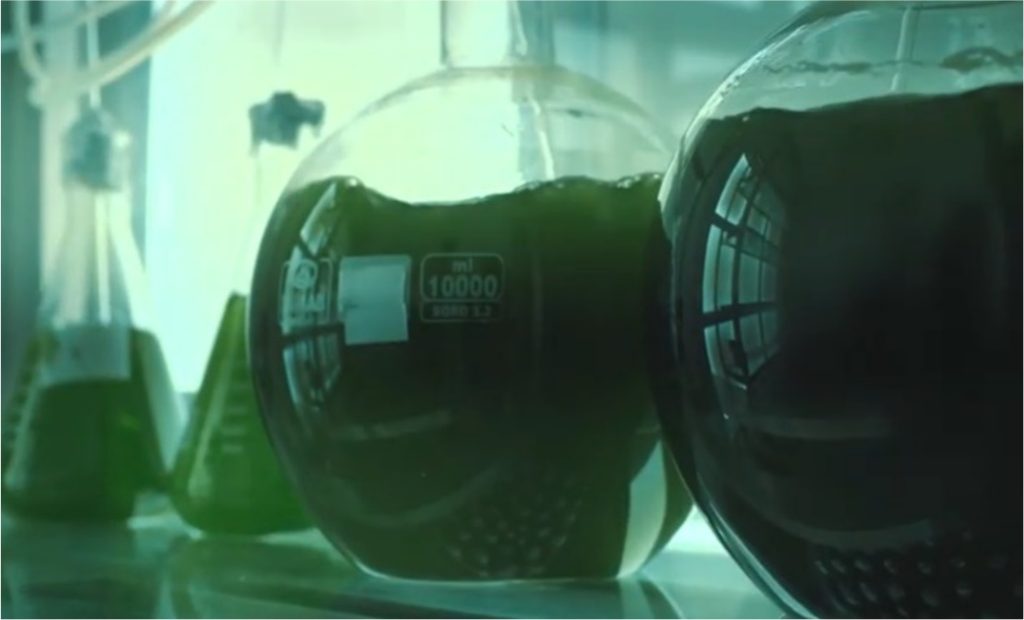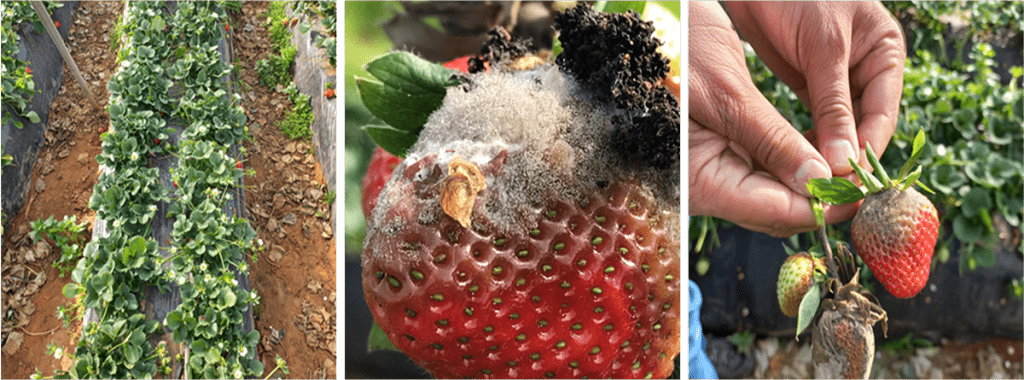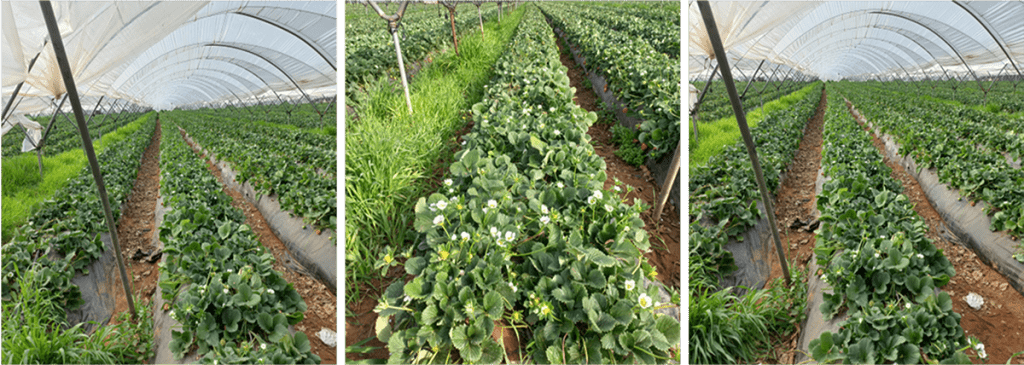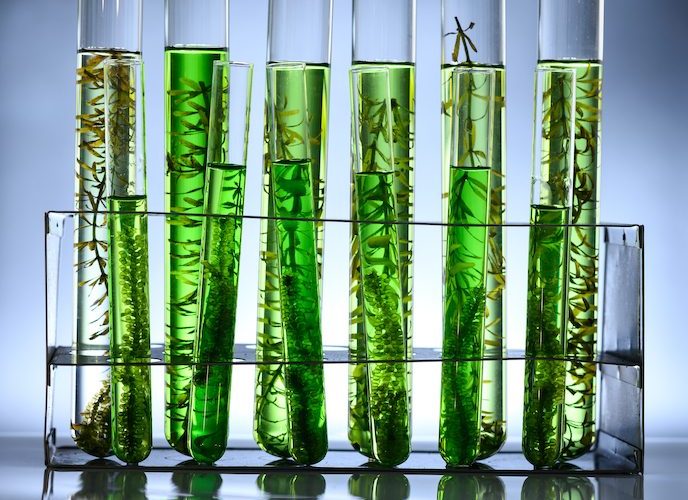MASCIR’s strategy, like Morocco’s, is to exploit one of our strengths: 3,500 km of coastline. It’s obvious to us: the sea is an inexhaustible source of microalgae. Microalgae are photosynthetic micro-organisms with characteristics found in both bacteria and plants: bacteria because they divide rapidly, and plants because they photosynthesise. Microalgae need to assimilate CO2 while light to produce organic biomass that can be used in a number of sectors. The implementation of our vision began in 2010 with the creation of our collection of microalgae isolated from the Moroccan coast.
We began by developing several processes for growing these microalgae, capturing CO2 and producing biomass. We have chosen a number of themes for developing these resources, which are renewable because they can be cultivated.
We all the resources we need for our research: a microalgae cultivation centre, a range of cultivation technologies including photobioreactors and laboratory and pilot-scale ponds.
At the laboratory level, our photobioreactors produce these microalgae before moving on to all the processes involved in adding value to these bioresources. Agriculture is the main beneficiary of our research.
In the national context, which is that of an arid and semi-arid country, we face a number of challenges, including those of profitability and sustainability. Climate change is forcing us to take an interest in agricultural abiotic and biotic stresses. We have therefore set ourselves the task of using these micro-organisms to develop a number of products for agriculture, mainly biostimulants and biopesticides.
Microalgae are inexhaustible renewable resources
Biostimulants are products that improve a plant’s resilience to a hostile environment, salinity and extreme temperatures. They also stimulate plant growth and nutrient uptake, improving yields. We have a yield problem in Morocco. From this point of view, our results are very convincing.
Our research also focuses on the contribution of biostimulants to combating the harmful effects of drought on plants. Biotic stress is not the least of our concerns. Climate change is causing pathogens, bacteria and viruses to proliferate. We are currently developing microalgae-based products to stimulate plant immunity against these diseases.
As well as being a renewable resource, these micro-organisms absorb a lot of CO2. The most important thing about these micro-organisms is that they are a renewable resource while absorbing large quantities of CO2. The conversion of this industrial CO2 into biomass depends on a number of factors. On average, two tonnes of CO2 can be used to produce one tonne of biomass.
Converting CO2 into biomass offers a number of advantages in terms of carbon footprint. Firstly, it helps to reduce the concentration of greenhouse gases in the atmosphere. Secondly, biomass stores carbon in the form of organic matter that can be used to produce renewable energy, among other things. Thirdly, using biomass as an organic fertiliser improves soil quality.
Renewable resources that can be cultivated require the direct use of seawater and industrial CO2. Their development is therefore not at the expense of freshwater resources, and they only exploit non-arable land. In short, they do not deprive agriculture of fresh water or arable land.
In Morocco, these renewable resources make it possible to recover non-arable land that has been abandoned for reasons of salinity. Land affected by desertification is used to grow microalgae using seawater and industrial CO2.
These microalgae grow very quickly, even faster than land plants. As a result, we have virtually inexhaustible resources and a wide range of industrial applications for these resources.

Industrial applications of microalgae biotechnology
Used in agriculture, environmental protection techniques and the food industry, microalgae are just as suitable for humans as they are for animals. Research is also underway into natural colouring agents and anti-oxidants. These huge advances are being made at a lower cost, because they use resources that are available in large quantities and virtually free of charge: seawater, CO2, non-arable land.
Research into microalgae began relatively recently, around twenty years ago. It was conducted in the laboratory for around fifteen years before moving on to the industrial applications phase.
We created a start-up called TECALGA. The company’s mission is to produce and market basic products for agriculture. At the same time, we are talking other investors about applying these technologies to human and animal nutrition, cosmetics and the development of products for the agri-food industry.
The industrial application of technologies derived from microalgae is developing rapidly worldwide. In Morocco alone, several companies are cultivating microalgae, mainly for human consumption. The use of microalgae in medicine, environmental sciences and bioenergy is also being explored.
However, some companies, such as Tecalga, are mainly interested in the agricultural applications of microalgae. Basic biostimulants have been validated and are ready for marketing. Together with an investor, we are preparing the industrialisation of these products in our laboratory.
For our part, we are developing low-cost applications tailored to Morocco’s needs. We have a significant advantage: an ideal climate and conditions – sunshine and seawater over 3,500 km – for growing seaweed and processing it. These conditions have enabled us to move into low-cost industrial production. Thanks to this advantage, we were among the first in the world to produce biostimulants based on microalgae. Today, many countries are following our lead.

Biostimulants and biofertlisants are different in nature
It’s important to remember that the world of microalgae is rich in thousands, millions of species. The biodiversity of microalgae is very rich. Each species is unique. We select the species that meet our needs before going on to formulate finished products that meet the needs of the plants.
We have developed standard products adapted to several types of plant. In particular, we have worked on a fairly wide range of crops such as tomatoes, peppers, red fruit (blueberries, raspberries, etc.) and fruit trees. We have tested our biostimulants on all Moroccan fruit trees and field crops including wheat, barley and pulses. Our two products are suitable for universal use.
It is important to emphasise the difference between fertilisers and biostimulants. Fertilisers are intended for plant nutrition. They provide plants with the nitrogen, phosphorus and potassium they need. When it comes to biofertilisers, we start by selecting species rich in NPK (nitrogen, phosphorus and potassium). We then develop a formulation that complies with the standards that allow them to be considered as organic fertilisers.
Biostimulants, on the other hand, do not concern nutrition; they are made up of molecules that stimulate the plant itself to enable it to adapt to its environment, assimilate fertilisers more effectively, and resist drought, salinity and biotic stress caused by plant pathogens.
Biostimulants are applied in the field to all types of crop, including high-value crops such as vegetables and fruit. Biostimulants are applied to fertile land to increase yields and improve sustainability. Biostimulants play an important role in reducing the use of chemical inputs – especially pesticides – to a strict minimum and maximising the performance of fertilisers. In the final analysis, biostimulants complement fertilisers and considerably improve their uptake by plants. Biostimulants therefore target the soil, the soil microflora and the plant. When plants are grown in unfavourable conditions such as salinity or drought, they need supplements to survive and grow. This is why most of today’s biostimulants can be seen as anti-stress weapons.
Climate change is producing a great deal of stress: extreme temperature stress, water stress, salinity stress and biotic stress caused by plant pathogens
Biostimulants and biofertilisers are organic products. They are the future of agricultural ecology. Microalgae biotechnology is the biotechnology of the present and the future.

Biofertilisers and chemical fertilisers
Does this mean that biofertilisers will replace mineral fertilisers? I don’t think they will replace chemical fertilisers, of which they remain a complement. Africa, for example, has huge soil fertilisation problems. Only chemical fertilisers can meet its needs. Biofertilisers can be used in synergy with mineral fertilisers to correct certain shortcomings in the input market. The race to increase yields requires the use of all types of fertiliser, while meeting sustainability requirements as effectively as possible.
Biofertilisers and biostimulants are compatible with what is known as conservation tillage. They are not disruptive. They do not disturb the fragile natural balance of soils. Their 100% biological composition fortifies the microflora of the ecosystem and enriches it with organic matter. Biofertilisers improve soil fertility and protect its ecosystem and biodiversity.
Biostimulants act at both soil and plant levels. There are two ways of applying biostimulants. The first, foliar application, acts directly on the plants to produce rapid effects. The second, application by irrigation, acts on the plant roots and soil microflora. The methods for applying biostimulants are flexible. They can be sprayed directly or by drone. Irrigation can also be used for drip irrigation. Finally, biostimulants can be mixed with other products
15 to 30% improvement in yields
The effectiveness of biostimulants and biofertilisers is measurable. We have measured it. How this compares with crops grown using conventional products obviously depends on the crop and the environment. Generally speaking, the results of our tests and measurements indicate that the use of our inputs produces yield gains of 15 to 30%. That’s an appreciable gain.
Let me go further. Biostimulants and biofertilisers don’t just help to improve yields. They also make an effective contribution to remedying soil degradation. To be exact, they can contribute to the recovery of degraded soils.
Algal biotechnology applied to the environment
In addition to research directly linked to agriculture, such as the development of biofertilisers and biostimulants, MASCIR’s plant biotechnology research is very active in the environmental field.
The MASCIR Foundation and its research teams have developed a microalgae-based bioprocess for the biorecovery nutrients from wastewater by strains of microalgae and the production of biomass.
The results obtained after treatment with microalgae are significant, particularly in terms of recovering nitrogen and phosphorus from wastewater.




